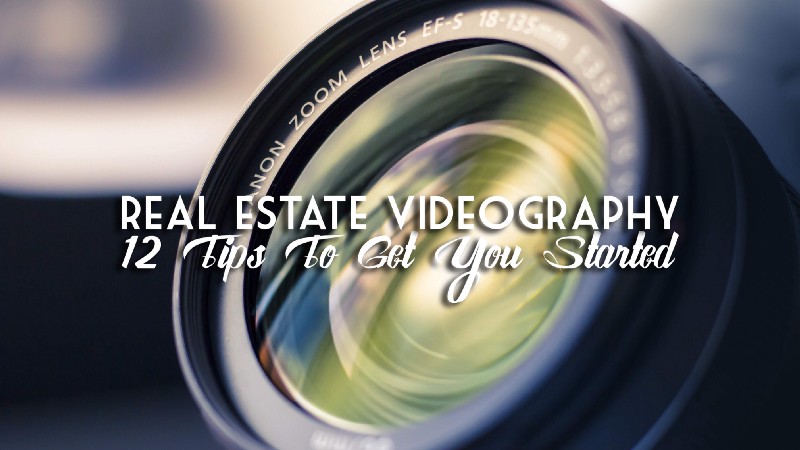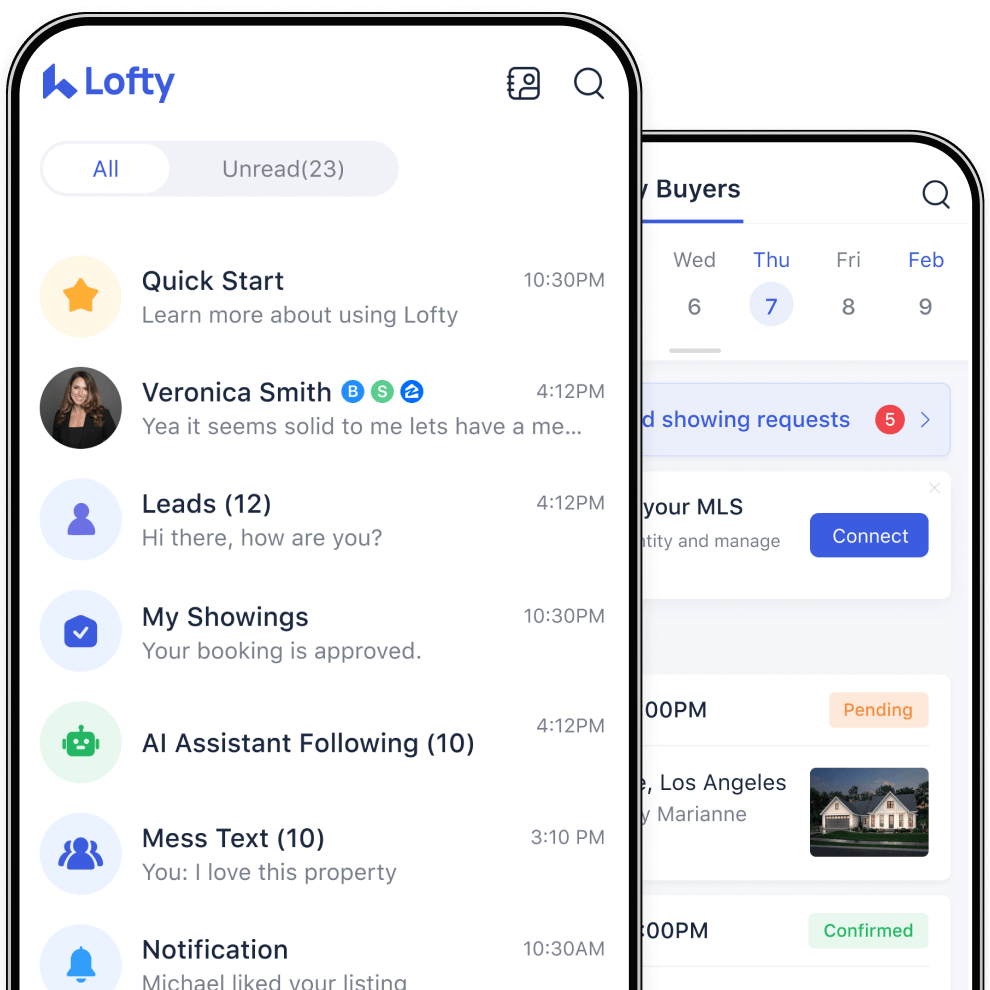Real Estate Videography: 12 Tips to Get You Started

You’ve built the perfect website, published plenty of great content, and are on the way to becoming a social media aficionado. But there’s one marketing channel few realtors dare to tackle: Real estate videography.
Online real estate video content is the latest real estate marketing tool with high returns on surprisingly little investment and even more surprisingly little popularity.
A 2014 industry report by Social Media Expert revealed 73% of marketersplanned on ramping up original video content, and 35% planned on increasing the production of short-form video on platforms like Instagram and Vine.
A study from The National Association of Realtors® revealed 50% of prospective home buyers use YouTube as their primary research method and 85% of buyers and sellers prefer to work with agents who have video experience. Naturally every realtor in your zip code is using video content to their advantage, right?
Wrong. Only 15% of real estate agents leverage video content!
But as more and more realtors turn to real estate videography, here are a few tips and best practices to give you an edge over the competition:
1. The Right Gear and Tools for the Job.
Creating compelling real estate video content doesn’t need to break the bank. Professional real estate videographers have the capital and the knowledge to operate five figure cameras, but you can still achieve great results with little investment.
Although personal cameras like small point-and-shoots and smartphones may seem like a great idea, consider investing in a handheld gimbal. Gimbals are designed to steady tracking shots and eliminate the jarring effect produced when walking around while recording.
You may think you have hands as steady as a surgeon, but your camera tells another story!
Products like DJI’s OSMO comes ready out-of-the-box to shoot property walkthroughs, but if the price seems too steep, you can purchase a stand-alone gimbal designed just for phones.
At the end of the day, you’re not just trying to tell a compelling story to reach your audience, you’re also trying to inspire confidence in the listing and in yourself as a realtor. Clean, crisp, and steady walk-throughs of your properties and evergreen content of neighborhoods will boost brand credibility and, according to Kathryn Royster with Inman, properties with video content receive quadruple the inquires.
2. Go Virtual …Reality!
Ready to kick it up a notch? Invest in a 360° camera to make it more interactive! Platforms like Youtube and Facebook can host 360 degree videos. Users can use VR headsets to look around your video at any angle and get a full, immersive property experience without even setting foot in person!
This is the ultimate competitive edge over other agents. Not only does this give prospects interactivity of an open house without physically being there, you are also allowing them to freely look around as if they were there in person. You’re still leading them in a tour though!
3. Live Video Streaming.
Utilize services like Bombbomb, Facetime, Skype, and Facebook Live to interact with your prospects. Answer questions on the spot, learn what they love, and show them exactly what they want to see! After all, with more people looking, it creates a sense of urgency on the end of the prospect to close the deal.
4. Be in the Video.
Most real estate video content is missing one critical ingredient: the agent! People want to get a feel for both the property and the agent responsible for the listing. Videos with the agent included receive more views than videos without the agent present.
Remember to stay relaxed and speak slowly and clearly. Begin each video by introducing yourself and transition to the property by introducing the neighborhood, the size of the property, and any unique features.
Here are five great examples of agents who present themselves well on camera. Notice how each of them addresses the camera confidently and casually, sort of like they’re talking to a friend.
5. Timing is Key.
Plan on shooting all your videos in the afternoon, around 3 to 5pm specifically. Depending on the season, the angle of the sun will be around 45 degrees and right in the sweet spot. If the sun is at too high of an angle, it can flood the house and your subjects in too much light. If the sun is too low, it can flood the camera and create lense flare. A slight overcast is ideal to allow better overall lighting for your videos.
6. Shorter is Always Sweeter.
Studies show that videos that are less than 4 minutes receive more views and have greater engagement than longer videos. While you shouldn’t create a full script (and end up sounding like a robot), it does help to think of a few key bullet points you want to mention in each room you feature.
7. Title Your Videos Appropriately.
Use the street address in the title of the video to boost SEO. Appropriately titled videos will be easier to discover by appearing higher in search results. Add your contact information in the description of the video so potential leads can call or email you directly. Also, include the listing’s vital information (number of bedrooms, baths, price, and any key attributes) clearly in the description. Lastly, make sure the titles of all your videos match to improve brand appearance.
8. Syndicate!
Start by setting up your own YouTube channel. Use your name and your brand as the channel title. Once you’ve uploaded all your real estate video content, start syndicating your videos by adding links on your social media channels and your local MLS.
Video content is also great for email marketing, too. Instead of sending prospects a wall of text, short videos help put a face to your name, increase your brand awareness, and encourage clicks and engagement.
Now that you’re on your way to becoming a real estate videography master, here are some great content suggestions to help you get the ball rolling:
9. Market-based Content. It’s better to become an expert on a target area or zip code than an entire county. To show you know your stuff, you might consider making an “Introduction Video” or “Neighborhood Tour” video. These help people place who you are and reassure them that you know the ins and outs of the community, school districts, parks, public transportation, crime and safety statistics, and have your finger on the pulse of what makes life in the area special.
10. “About Us” Content.
The ‘About Us’ section on websites is critical for businesses of every size. It helps users gain a better understanding of your company culture, personality, history, and helps users see behind the scenes. The About Us video will only need to be shot once, so make sure you spend plenty of time planning, shooting, and editing. This video will help influence prospects while shopping around for an agent, so consider hiring a professional videographer.
11. “How-to” Content.
How-to content is great for prospects and driving leads. Here you can educate first time homebuyers on how the homebuying process works, address common mortgage and finance questions, and offer homebuyers tips on hiring the right contractor for their first projects. How-to content is great to build out a knowledge base on your website.
12. “Thought Leadership” Content.
Thought leadership content is great to share with other real estate agents. It’s a chance for you to flex your knowledge muscle and share your tips and tricks for the trade. Thought leadership videos will increase your credibility and authority as a real estate agent. Prospects will feel more confident and you can teach aspiring agents with thought leadership content.
